Abstract
The leprosy incidence rates so far in the vaccinated and unvaccinated children aged 5-9 and 10-14 years are similar. The BCG-vaccinated children aged 0-4 years at intake had an incidence rate lower than that of children in the control group. BCG vaccination did not protect household contacts or children aged 5-14 years not exposed in the household, and did not influence the distribution of the forms of leprosy in the cases detected. The lepromin reaction in relation to the age at intake was consistently stronger in the vaccinated children than in those of the control group; the younger the age group the more pronounced was the difference, which was only slight in the age group 10-14 years at intake. If the results of the late lepromin reaction are related to the age at onset (when the children are older than at intake), the differences between the BCG and the control groups tend to decrease. It does not seem that the BCG-vaccinated children suffer from a less serious form of leprosy than the nonvaccinated children (most of them nonreactors to tuberculin).
Full text
PDF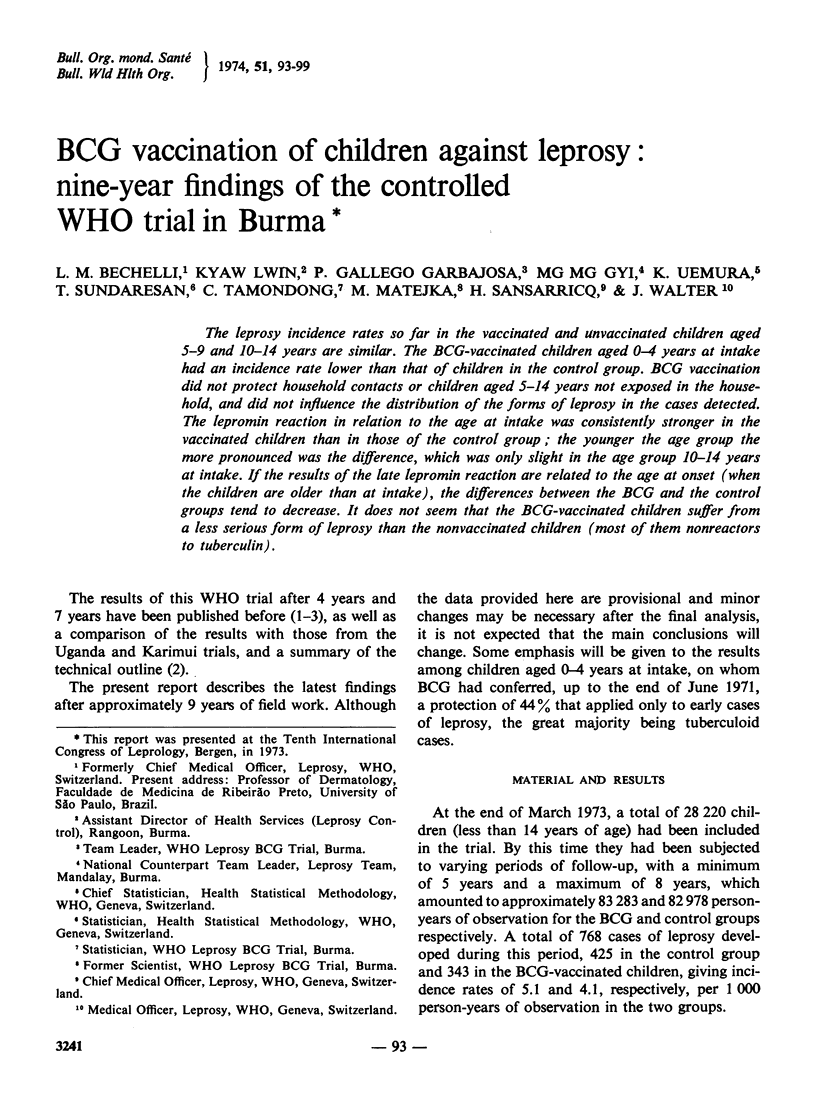
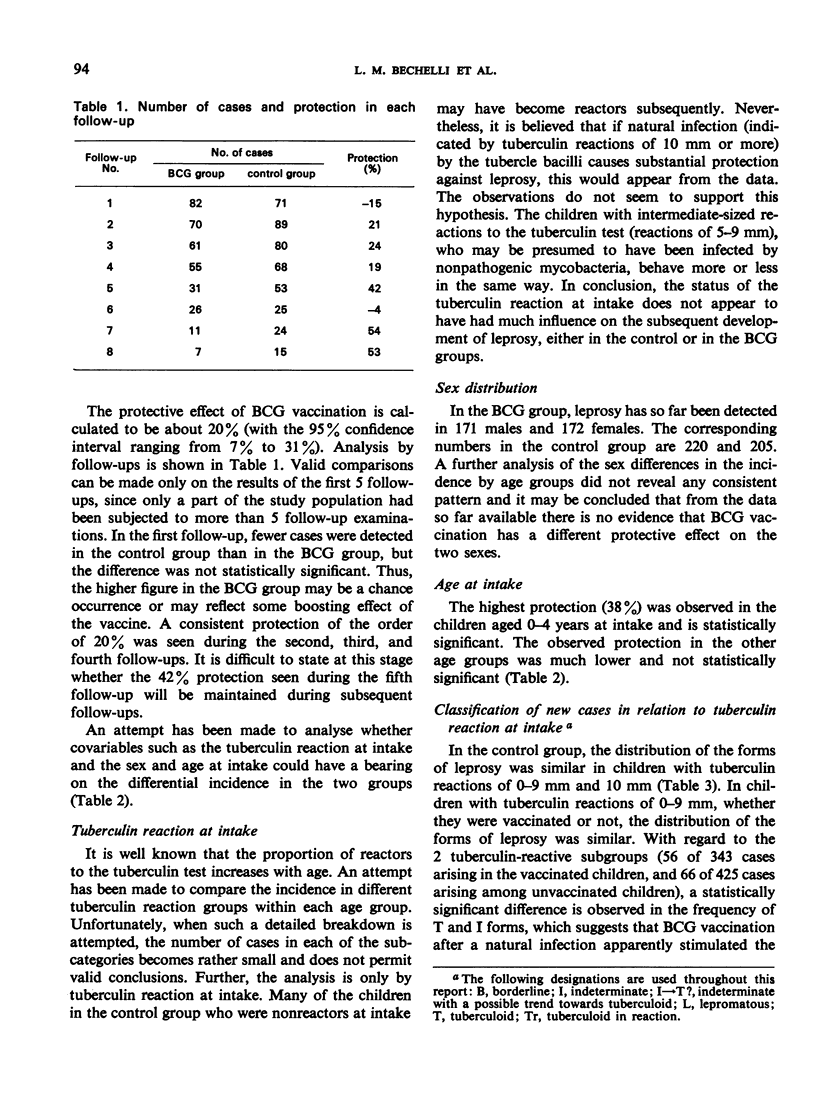
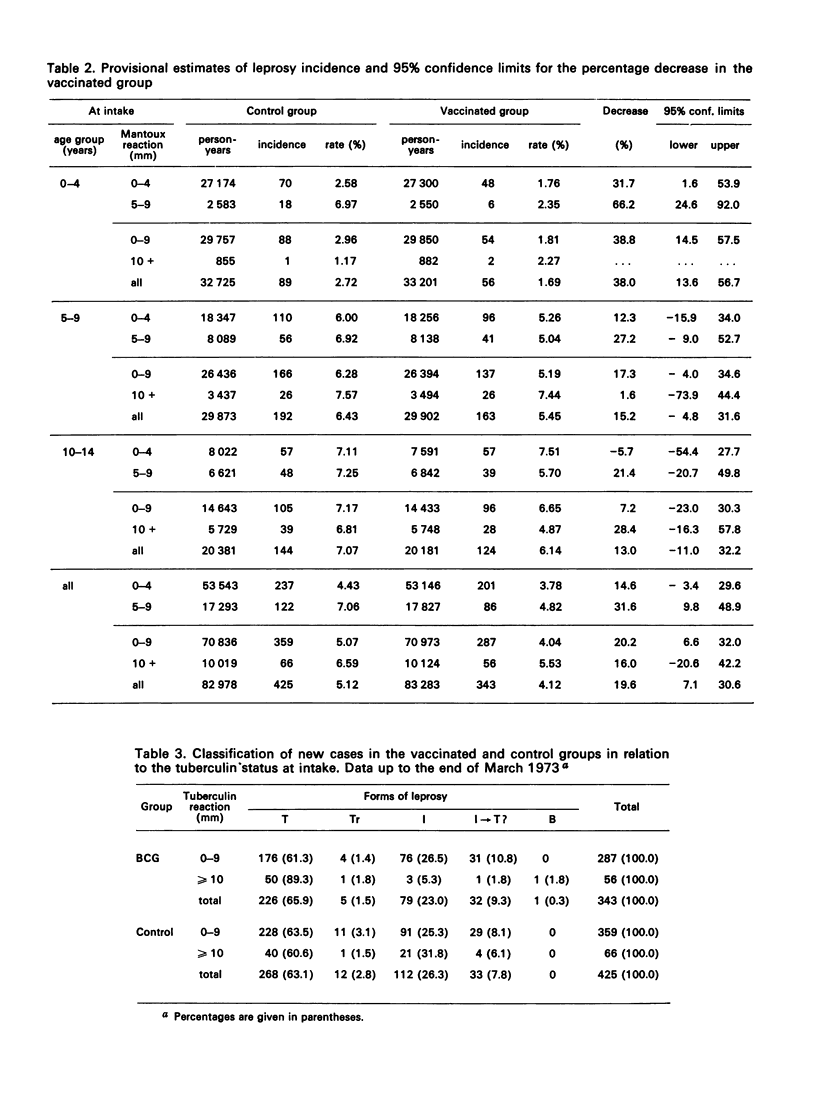
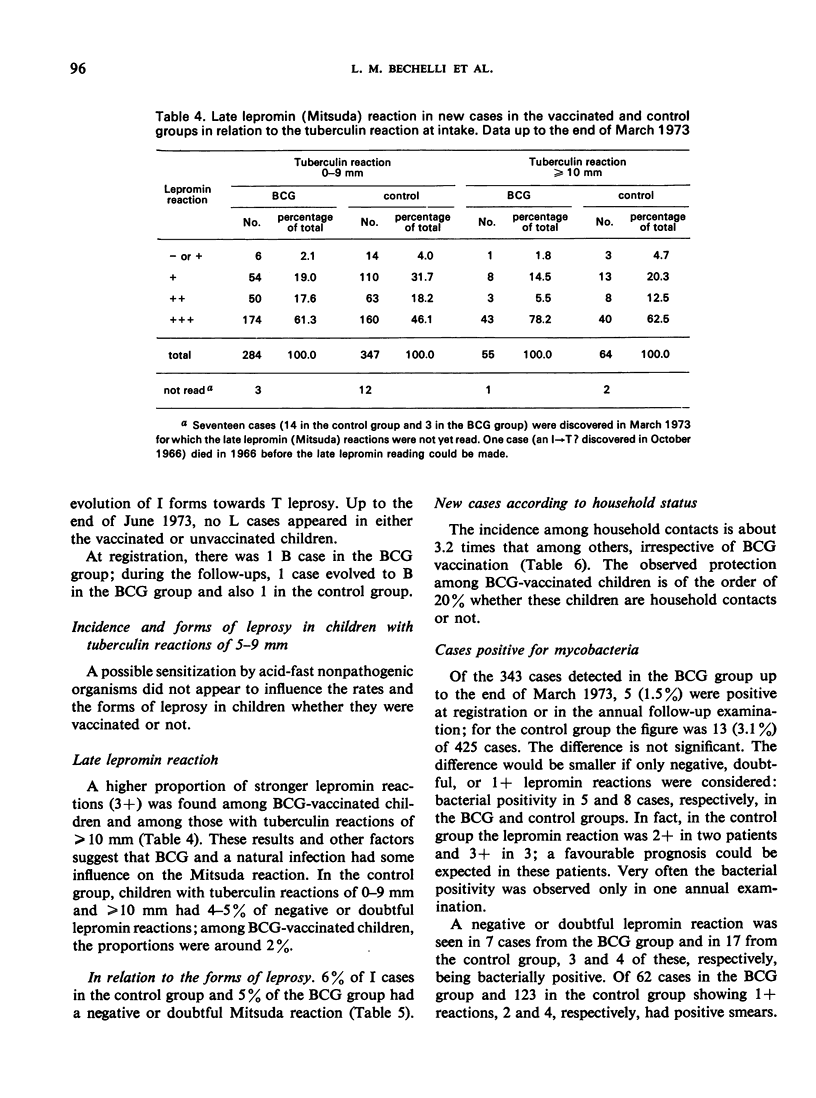
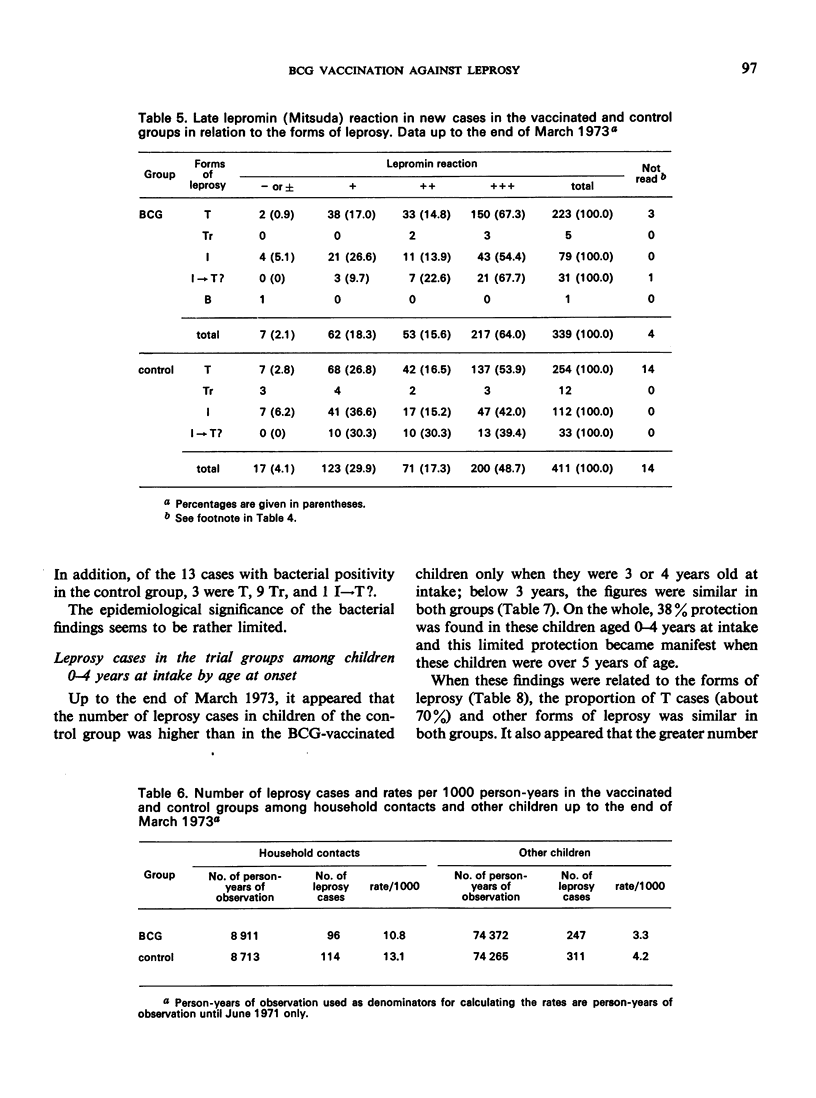
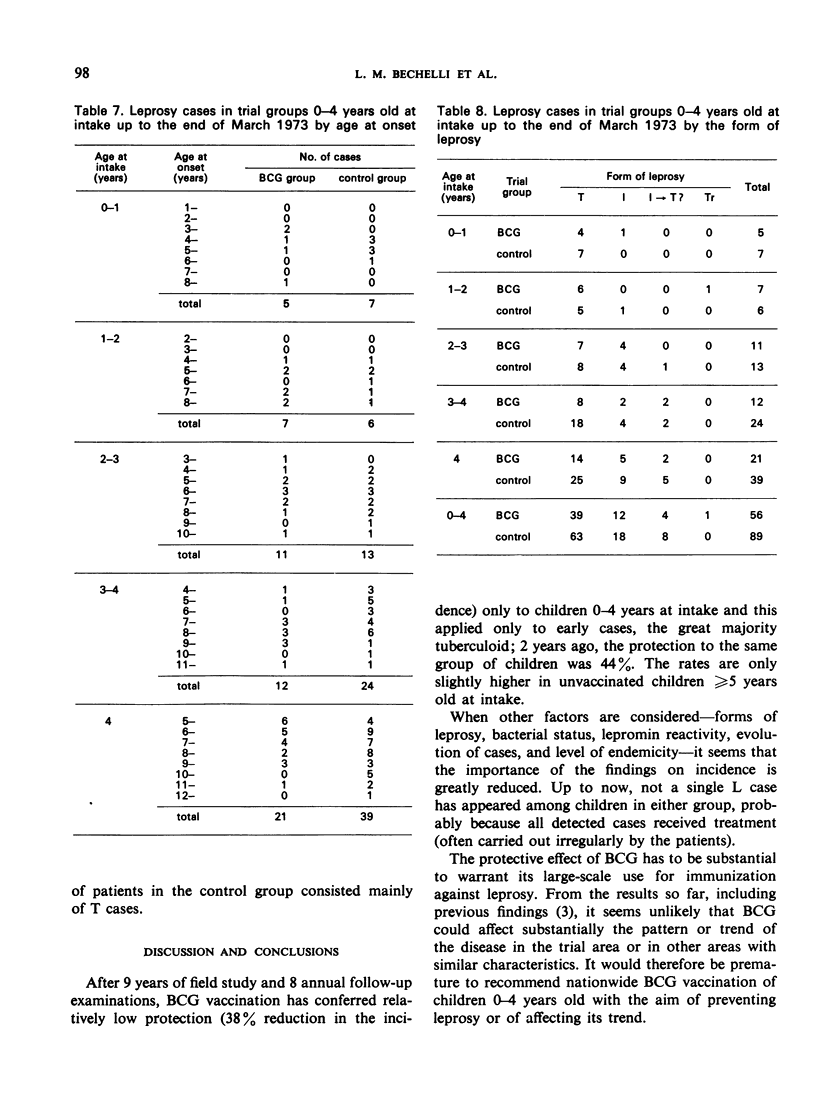
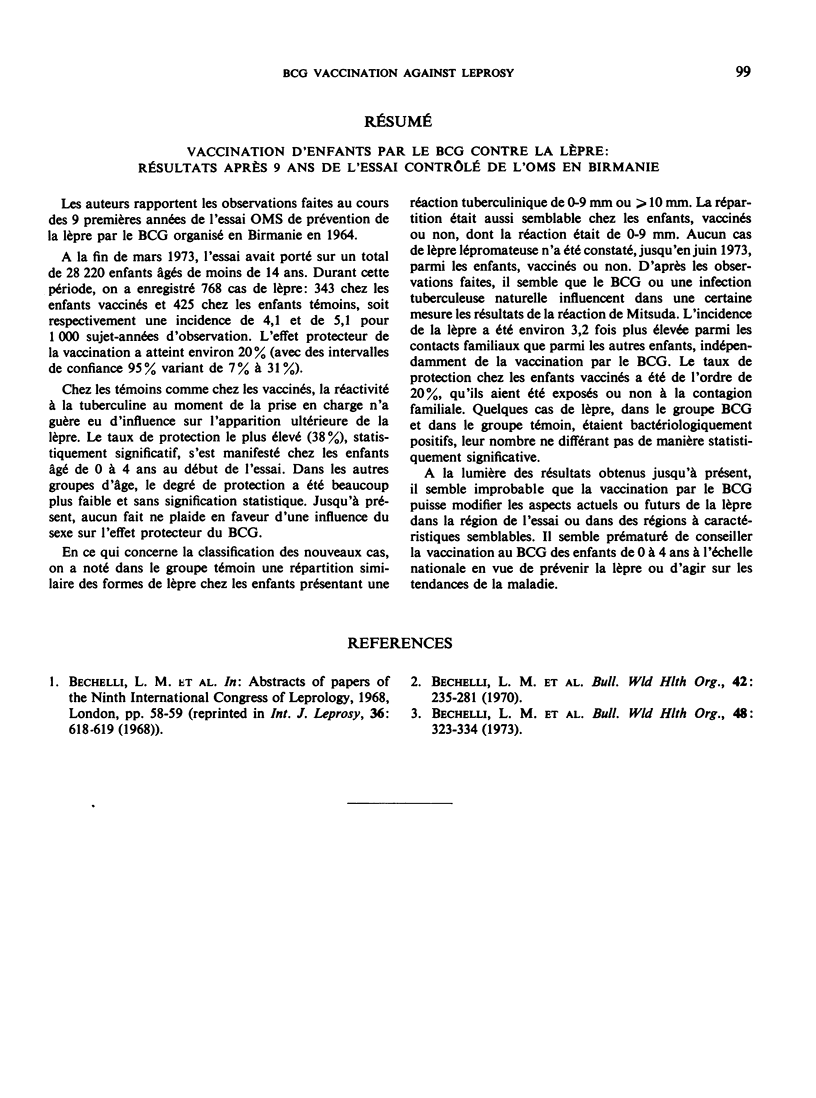
Selected References
These references are in PubMed. This may not be the complete list of references from this article.
- Bechelli L. M., Garbajosa G., Uemura K., Engler V., Martínez Domínguez V., Paredes L., Sundaresan T., Koch G., Matejka M. BCG vaccination of children against leprosy. Preliminary findings of the WHO-controlled trial in Burma. Bull World Health Organ. 1970;42(2):235–281. [PMC free article] [PubMed] [Google Scholar]
- Bechelli L. M., Garbajosa P. G., Gyi M. M., Uemura K., Sundaresan T., Martínez Domínguez V., Matejka M., Tamondong C., Quagliato R., Engler V. BCG vaccination of children against leprosy: seven-year findings of the controlled WHO trial in Burma. Bull World Health Organ. 1973;48(3):323–334. [PMC free article] [PubMed] [Google Scholar]


